#kirgizstan
Explore tagged Tumblr posts
Text
Kirgizstan - Som - KGS

Kirgizstan menggunakan mata uang Som, disingkat KGS. Som diperkenalkan pada tahun 1993 setelah negara tersebut merdeka dari Uni Soviet. Jika Anda ingin tahu lebih banyak tentang ekonomi Kirgizstan, sejarah Som, atau topik lain terkait, silakan beri tahu!
BERIKUTNYA : LOGIN > DAFTAR >
0 notes
Text
Belarus Security Update - 19 June - 25 June
The BSU is a paid service that comes with the Ukraine Conflict Monitor. Today’s issue is free, so please consider subscribing to access future content.
The political-military situation in Belarus
BLUF: The posture of the Belarusian Armed Forces remained unchanged last week. No additional information appeared about the deployment of nuclear weapons to Belarus. Minsk's involvement in negotiations between the President of Russia and the Head of the Wagner PMC dominated the infosphere during the past few days.
Executive summary
Over the past seven days, the Belarusian Armed Forces started a few noteworthy training drills. Although, their general training activity remained quite average. Due to the several graduations of military academies (and faculties), dozens of new officers reinforced the army. An uptick in the activity of the Russian Armed Forces was also observed. Still, it did not herald any changes in the presence or operations of Russian units to deployed in Belarus.
Political developments
From a political perspective, the most important developments occurred on Tuesday and Saturday.
On Tuesday, Belarusian President Alexander Lukashenko met with foreign ministers of the Collective Security Treaty Organisation (CSTO) to discuss the current military-political situation and the priorities of the Belarusian chairmanship in the organisation. The meeting involved six CSTO ministers and the Secretary General of the organisation, Imangali Tasmagambetov (Kazakhstan).
During the event held in Minsk, Lukashenko pointed out the successful settlement of crises appearing in the CSTO responsibility areas (he mentioned Armenia, Tajikistan and Kirgizstan) and noted that Belarus could support any measures to restore and strengthen trust between organisation members. He added that the conflict between Armenia and Azerbaijan should be settled before Western countries get involved in negotiations. In his view, western involvement would seriously deteriorate and complicate peace negotiations. In this context, Lukashenko brought Georgia as an example of a state that, after "being full of Western promises", decided to return to regional cooperation.
Later, Lukashenko pointed out that the CSTO was a military-political block with a creative and unifying agenda with no belligerent intentions. According to him, the West is full of "aggressive hysteria", which was aimed against Belarus (and Russia) and "drowns out the voices of wisdom and reason". The Belarusian leader highlighted the shared history of the organisation's member states and once more emphasised the necessity of deeper cooperation going forward. Lastly, Lukashenko noticed the necessity of the increasing informational-analytical potential of the CSTO, especially now that member states are "in the combat zone of informational operations".
The second event occurred on Saturday when Alexander Lukashenko participated in the negotiations between the leadership of Russia and the Wagner PMC owner, Yevgeny Prigozhin.
In the morning hours, Lukashenko had their first phone conversation with his Russian counterpart. Officially, Vladimir Putin informed the Belarusian leader about the current situation in Russia. However, the Belarusian Hajun project claimed that during the call, Putin may have requested the deployment of CSTO forces to stabilise the situation. However, we find this claim to be highly unlikely.
After that, the Belarusian President held two meetings with security and military officials. As the presidential press service informed later, the negotiation lasted the whole day and resulted in an agreement to avoid a "bloody massacre" on the Russian territory. Ultimately, Prigozhin accepted Lukashenko's offer and stopped the Wagner subunits' movement towards Moscow. In return, Prigozhin received security guarantees for himself and his "fighters" and agreed to leave for Belarus. Consequently, the Belarusian leader had one more phone call with Vladimir Putin to inform him about the results of the talks.
During the negotiations, the Belarusian State Security Council expressed its support for Russian government forces. According to the statement, Belarus fully shared Russian goals and objectives and called for the voice of reason among the parties involved. The statement said that any internal conflict in military and political leadership was a "gift" to the collective West.
The Wagner mutiny also "activated" representatives of the Belarusian opposition. The leader of the opposition government, Svetlana Tsikhanouskaya, called representatives of the Belarusian military-political leadership to expel Russian troops from the country and close the border with Russia to protect their national interests. She added that Belarusians should not choose between Putin or Prigozhin but focus on their nation and its needs.
A Member of the Tsihanouska's government (res.) Col. Valery Sakhashchik also called the Belarusian military to jointly resists Russian forces deployed in Belarus. Sakhashchik noted that servicemen should put aside their doubts and questions because such an opportunity might not happen again.
Notably, Belarusian activist Vadim Prokopyev informed that a member of Lukashenko's circle would change sides. This, in turn, would signal the Belarusian citizens to start taking "opposition measures".
Comment: Let's start with Prigozhin. As of the time of writing (Monday, 26JUN), we do not know where he is or whether he will really end up in Belarus. If he does, we do not currently assess that he would build up forces to attack Ukraine from Belarus, as was discussed in social media and elsewhere. Lukashenko's involvement in staving off the crisis is undoubtedly his success. However, there are still too many questions than answers about what really occurred on Friday-Saturday and what impact this will have on Russia and Belarus. Secondly, we want to caution everyone who takes what the Belarusian opposition says at face value. They have a long history of making bombastic and highly exaggerated claims about the Lukashenko regime and the situation in the country. Their access to the people in power in Belarus is highly likely very limited.
Regarding the issue of nuclear weapons deployment, on Saturday, Russian Foreign Minister Sergey Lavrov stressed that nuclear weapons (which would be) deployed in Belarus would remain under Russian control "in line with international obligations."
Lavrov's statement did not confirm recent Putin's remarks that the deployment process was ongoing. Indeed, the Head of the Ukrainian Military Intelligence, Maj. Gen. Kyrylo Budanov denied on Wednesday that Moscow deployed nuclear weapons to Belarus, but he added that preparations of storage facilities were ongoing.
The Belarusian State Security Council Secretary, Lt. Gen. Alexander Volfovich, also commented on this issue. He claimed there are no grounds to say that deployment would threaten other countries because 150 nuclear bombs are currently stored in Europe. Volfovich noted that Belarus and Russia were only involved in strategic deterrence measures in contrast to the United States, which had conducted an audit of warheads stored on the continent last year.
Subscribe now
Military developments
Last week, probably around 500 lieutenants reinforced the Belarusian Armed Forces. At least 419 lieutenants graduated from the Belarusian Military Academy on Saturday. Similar ceremonies were held at the Belarusian State University of Informatics and Radioeletronics, Belarusian State University (both located in Minsk) and the Military Faculty of the Grodno State University.
A day earlier, 151 officers graduated from the General Staff Faculty of the Belarusian Military Academy. This refers to 137 officers of the operational-tactical level and 14 officers of the operational-strategic level.
On Tuesday, at least nine officers were promoted to the colonel rank. Most Belarusian high-rank officers participated in the official ceremony, including the Minister of Defence (Lt. Gen. Viktor Khrenin) and Chief of General Staff (Maj. Gen. Viktor Gulevich). During the event, several servicemen were awarded medals ('For Impeccable Service' and 'For Distinction in Military Service'). The Commander of the Belarusian Air Force and Air Defence Forces, Col. Andrey Lukyanovich, was one of them.
Also on Tuesday, the Belarusian Hajun project reported the construction of a defensive line in Belarus. Work was ongoing near Saki village, located in the vicinity of the Western Belarusian border (less than 30 kilometres from Poland):
On Tuesday, the Head of the Main Ideological Work Department, Maj. Gen. Leonid Kasinsky noted that Belarus would not attack any country, but he stressed he was unsure about neighbouring states attacking Belarus. He added that Poland was training fighters seeking to conduct a coup in Belarus. It remains to be seen whether Minsk will start to erect additional fortifications with NATO countries.
Speaking about the People's Militia, he stressed that the Belarusian society initiated the creation of the formation. He claimed that the Belarusian MoD had received dozens of requests from people who wanted to "protect their homeland" after the start of the Russo-Ukrainian conflict. Many of them did not serve or were already out of the military reserve, and because of that, the MoD decided to create such an organisation and use the potential of Belarusian citizens who would normally be excluded from military service.
Exercises
Two drills conducted last week were noteworthy.
Last week, two training drills can be considered most noteworthy.
On Wednesday, the Belarusian MoD informed about the start of the mobilisation exercise of the Minsk oblast military commissariats. Officially, the exercise has an annual character and is meant to assess the degree of readiness of local executive bodies, military commissariats, and government agencies. Practical actions will last until 30JUN and include the induction of reserve personnel into the service and vehicles from the national economy and the use of additional infrastructure facilities.
The second exercise drill took place between Tuesday and Friday and involved presumably all subunits of the 116th Assault Aviation Base. On Wednesday, strike aviation groups (Su-25 and Yak-130 aircraft) practised SEAD (suppression of enemy air defences) and CAS (close air support) missions at the Ruzhany Training Ground. A day later, L-39s were also involved in conducting reconnaissance missions. Most likely, a Russian IL-22VPU (C2 aircraft) also took part in the exercise.
On Wednesday, the 115th Air Defence Regiment and the 2284th Radiotechnical Battalion (8th Radiotechnical Brigade) underwent air defence drills. S-300 subunits of the first unit trained at the Brestsky Training Ground and practised redeployments and the organisation of the launcher's security against enemy reconnaissance groups and UAVs. The details of the 2284th Radiotechnical Battalion's drills were not publicised. On Thursday, unspecified reconnaissance subunit(s) of the 38th Air Assault Brigade underwent classes related to overcoming water obstacles.
Throughout the week, several formations held 50-kilometre training marches summarising the training process of military drivers. Such drills took place on Tuesday (in the 38th Air Assault Brigade) and on Friday (in the 103rd Airborne Brigade, 19th Mechanised Brigade and 56th Communications Regiment).
Last week, the were several noteworthy movements of Belarusian military equipment:
· Tuesday:
A single Kamaz, along with five BMPs (most likely 6th Mechanised Brigade), were moving in Grodno;
A single BM-27 and S-300 launchers were moving from Slutsk towards Minsk;
About nine Ural trucks were moving in Minsk;
· Wednesday:
Nine Ural trucks with a covered Kamaz truck and a UAZ-396 were moving in Minsk;
A single BUK-MB3 launcher was moving in Minsk;
· Thursday:
At least 15 various trucks with Tigr vehicles were moving near Privolnyy;
· Friday:
A single BM-21A Belgrad MLRS was moving towards Minsk from Barysaw;
A column of 15 various vehicles (including two Ural trucks) was moving in Kolodischi;
· Saturday:
Two S-300 launchers were moving between Dobrush and Zyabrovka;
A column of six vehicles, including two Tigers, as well as BMPs and BTRs, was moving towards Minsk from Khatezhino;
Russian military activity in Belarus
Last week, the Russian activity mainly occurred in the Belarusian airspace. About ten Russian aircraft arrived in Belarus. Notably, five of them (Il-76s) arrived only on Saturday.
Russian Mi-8 helicopters continued their frequent flights near Belarusian training grounds on Monday, Wednesday and Saturday.
On Thursday, the Machulischy Air Base hosted training flights of several Russian Su-30SM fighters.
A Russian Mi-24 fell near the village of Lesnaya. According to the Belarusian MoD, the crew members suffered injuries.

Subscribe now
0 notes
Text

"One of my Artworks - Anel Gur . From Israel .Was born in Kirgizstan in 1973. All about Haifa."
0 notes
Text
Former Soviet Union
Russia was formed in 1992 from the former Soviet Union. The last mega event hosted before the dissolution of the Soviet Union was the partly boycotted Moscow Olympic Summer Games in 1980. With the breakaway of many now-independent countries such as Kazakhstan, Kirgizstan and Georgia, Russia lost many of its winter sports hubs and training centres. President Vladimir Putin, being a passionate…
View On WordPress
0 notes
Text
Former Soviet Union
Russia was formed in 1992 from the former Soviet Union. The last mega event hosted before the dissolution of the Soviet Union was the partly boycotted Moscow Olympic Summer Games in 1980. With the breakaway of many now-independent countries such as Kazakhstan, Kirgizstan and Georgia, Russia lost many of its winter sports hubs and training centres. President Vladimir Putin, being a passionate…
View On WordPress
0 notes
Photo








CHINA - KASHGAR
1 note
·
View note
Photo

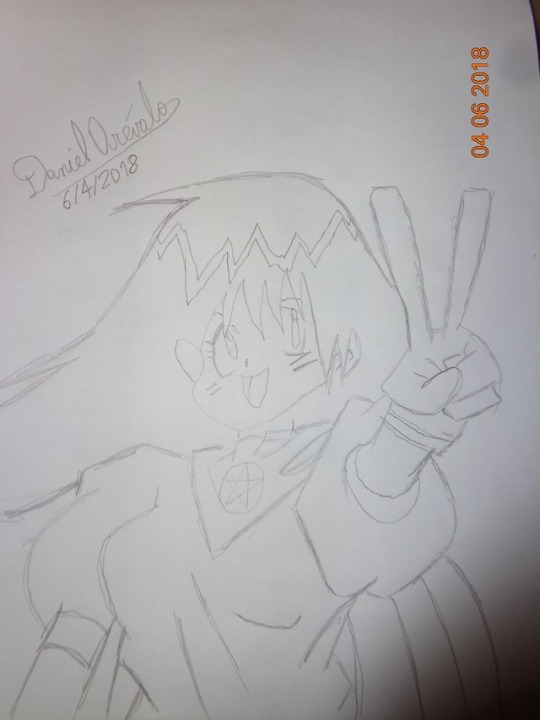

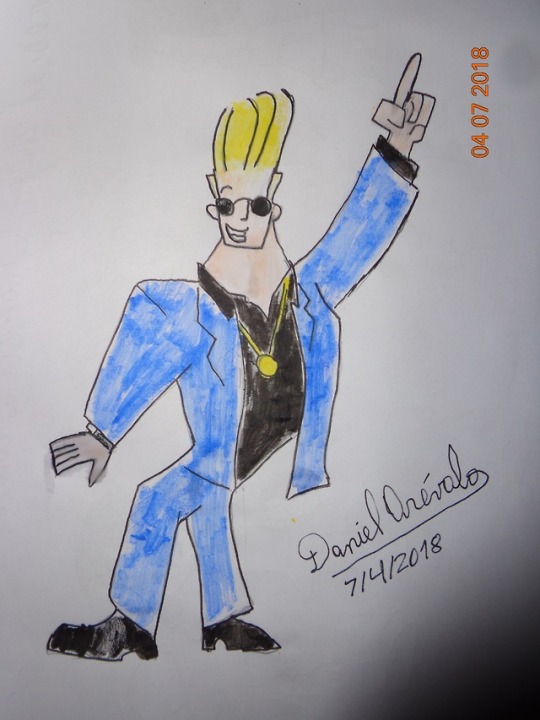

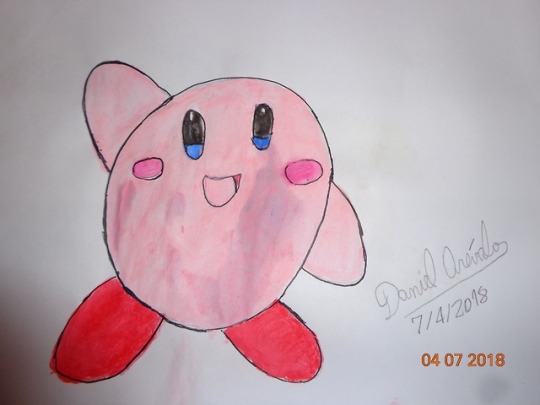
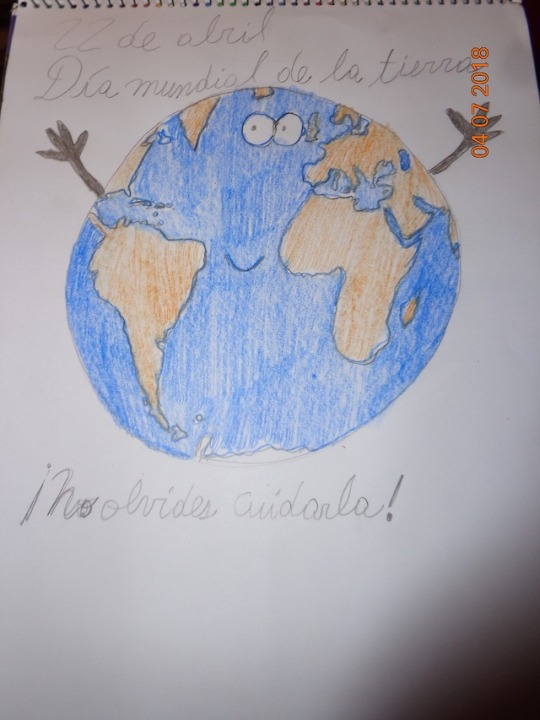
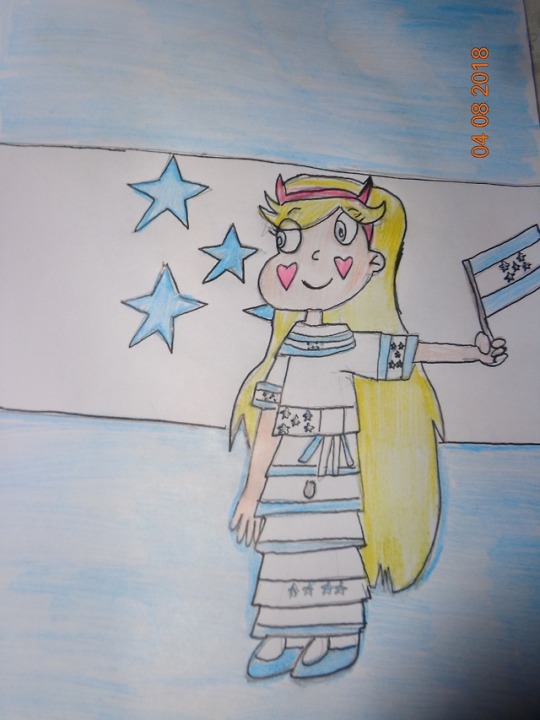
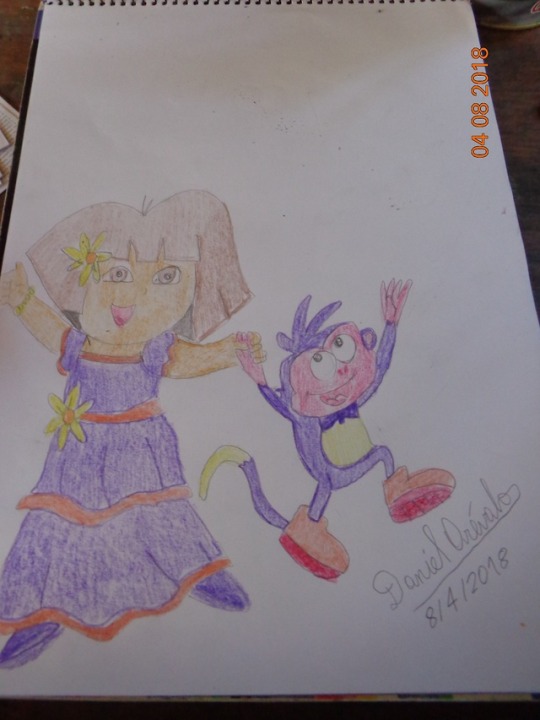
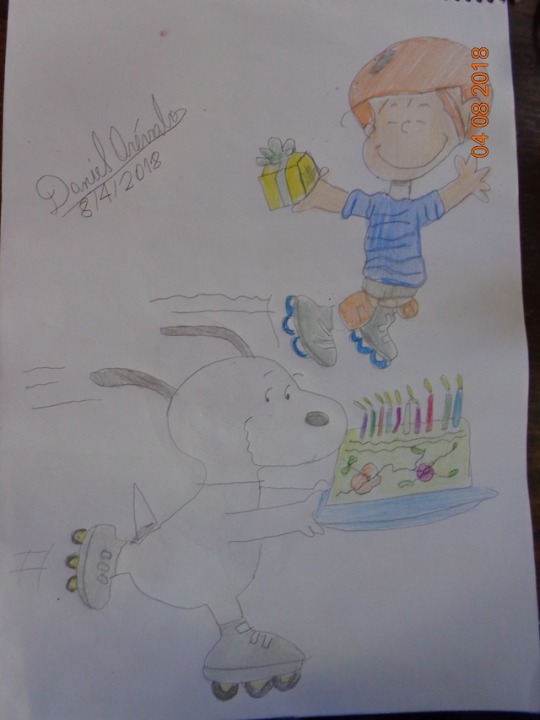
10 nuevos dibujos hoy domingo:
Milo Murphy (La ley de Milo Murphy) con el traje nacional y bandera de Kirguistán (c) Dan Povenmire,Jeff “Swampy” Marsh y Disney
Ameria Will Tesla Saillune del animé Slayers (en español,Los justicieros yo nunca pude verlo de pequeño) (c) Hajime Kanzaka,Egg Films,TV Tokyo
Dibujo del especial de la saga Peanuts del año 1979 Eres,el mejor Charlie Brown (c) Charles Monroe Schulz,CBS
Johnny Bravo con traje disco (c) Van Partible,Cartoon Network
Reiko Mikami en traje de baño (c) Takashi Shiina,TV Asahi
Kirby con lápices acuarables (c) Nintendo
Dibujo del día mundial de la tierra que será el domingo 22 de abril (dibujo original)
Star Butterfly (Star vs las fuerzas del mal) con el traje nacional y bandera de Honduras (c) Daron Nefcy,Disney
Dora y Botas (Dora la exploradora) bailando (c) Chris Gifford, Valerie Walsh Valdes,Erik Weiner y Nickelodeon
Y termina con otro dibujo de la saga Peanuts que corresponde á un especial de la saga Peanuts que es Fué mi mejor cumpleaños nunca, Charlie Brown de 1997 (c) Charles Monroe Schulz y Paramount
#milo murphy#kirguistan#kirguis#kirgizstan#kirgiziya#kyrgyz#kyrgyz tili#kyrgyzstan#kyrgys#la ley de milo murphy#milo murphy's law#ameria will testa saillune#slayers#eres el mejor charlie brown#you´re the greatest charlie brown#peanuts#charlie brown#johnny bravo#reiko mikami#cazafantasmas mikami#ghost sweeper mikami#kirby#dia mundial de la tierra#world day of the earth#22 de abril#april 22#star butterfly#honduras#star vs las fuerzas del mal#star vs the forces of evil
1 note
·
View note
Photo

Abdaliev creates a sculpture for Cyprus Modern Art Museum By Ahmet Abdulaziz.... Isken Abdaliev, an artist from Kyrgyzstan, recently built a sculpture entitled "Balance", for the Cyprus Museum of Modern Art.
0 notes
Photo

Thermal springs in Chong-Oroktu on the Northern side of lake Issyk-Kul is quite a delight for locals and tourists. However we had to skip it as there were way too many visitors. Термальные ванны вблизи Чонг-Орокту на северной стороне озера Иссык-Куль. Нам пришлось их обойти стороной, уж слишком было много посетителей.
#Kyrgyzstan#kirgizstan#Chong oroktu#Thermal baths#Thermal spring#Issyk-kul#Кыргызстан#Киргизия#Иссык-Куль#Термальные ванны#Термальные источники#Чонг-Орокту
3 notes
·
View notes
Photo

Дорогие друзья, знаете ли вы, что 21 марта, в день весеннего равноденствия, жители ряда регионов России и других республик (узбеки, казахи, башкиры,татары) отмечают старинный праздник Навруз-байрам (Наурыз). В странах Востока, Средней и Малой Азии этот праздник считается первым днем наступившего нового года. "Оставьте в прошлом сожалений груз, Встречайте с вдохновением Навруз! Пусть лучик солнца вас одарит теплотой, А небо ночью осветит ваш путь домой. Пусть праздник будет полон доброты, Пускай в реальности исполнятся мечты. Накройте стол, садитесь отмечать, Пора красавицу—весну встречать! Восточный праздник — Новый год, Приход весны, благоуханья, Пришел Навруз — как «Новый день», Наурыз день, и день желанья. Пусть в этот день ваши мечты, Все воплотятся и свершатся, В материальные черты, К которым все из нас стремятся." #happynewyear #eastern #navruz #праздниквесны #восточныйновыйгод #деньравноденствия #Uzbekistan #Kazahstan #Kirgizstan #Tajikistan #Tyrkmenistan #Iran #Irak #Turkey #Russia https://www.instagram.com/p/BvQsJQLAw_t/?utm_source=ig_tumblr_share&igshid=1iyg73gnufv7w
#happynewyear#eastern#navruz#праздниквесны#восточныйновыйгод#деньравноденствия#uzbekistan#kazahstan#kirgizstan#tajikistan#tyrkmenistan#iran#irak#turkey#russia
0 notes
Photo

Kyrgyzstan
#kyrgyzstan#kirgizja#kirgizstan#kirgistan#around the world#mountains#traveldestination#travel around the world#travel and landscape photography#mountains photography#nature#nature photography#mountains panorama#trekking in the mountains#travel photo blog#travel photo diary#world travel#in the mountains#panoramic photography#travel to kyrgyzstan#silk road
0 notes
Photo

#kirgistan#central asia#kirgizstan#world citizen#travelling#photography#photographer#documentary#canon#iphone
1 note
·
View note
Text
Kalah dari Kirgizstan, Indonesia Hanya Keluar Sebagai Runner Up AWSC 2017
New Post has been published on http://bit.ly/2BNY31K
Kalah dari Kirgizstan, Indonesia Hanya Keluar Sebagai Runner Up AWSC 2017

Topbola.net - Timnas Indonesia gagal menjuarai turnamen Aceh World Solidarity Cup (AWSC) 2017 usai kalah dipertandingan terkahir dari Kirgizstan dengan skor 0-1 pada laga yang berlangsung di Stadion Jatapan Bangsa Banda Aceh, Rabu. (06/12) sore WIB. Timnas Indonesia yang membidik hasil...
0 notes
Photo

Traditional guljaka ornament. Photo source The republics of Central Asia region are Uzbekistan, Tajikistan, Kazakhstan, Kirgizstan and Turkmenistan.
19 notes
·
View notes
Text
Longisquama insignis
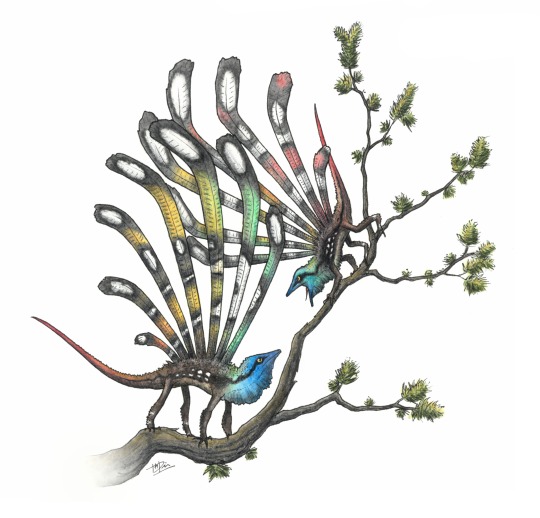
By Tas Dixon
Etymology: Long Scales
First Described By: Sharov, 1970
Classification: Biota, Archaea, Proteoarchaeota, Asgardarchaeota, Eukaryota, Neokaryota, Scotokaryota, Opimoda, Podiata, Amorphea, Obazoa, Opisthokonta, Holozoa, Filozoa, Choanozoa, Animalia, Eumetazoa, Parahoxozoa, Bilateria, Nephrozoa, Deuterostomia, Chordata, Olfactores, Vertebrata, Craniata, Gnathostomata, Eugnathostomata, Osteichthyes, Sarcopterygii, Rhipidistia, Tetrapodomorpha, Eotetrapodiformes, Elpistostegalia, Stegocephalia, Tetrapoda, Reptiliomorpha, Amniota, Sauropsida, Eureptilia, Romeriida, Diapsida, ???
Time and Place: 242 million years ago, in the Ladinian of the Middle Triassic

Longisquama is known from the Madygen Formation of Kyrgyzstan

Physical Description: Longisquama was a small, somewhat lizard-like reptile reaching somewhere around 8 or 9 centimeters in body length from snout to tail - though this is uncertain, as tail elements are not preserved at this time. It had very large, hockey-stick shaped scales in a single row going along its back, with some of the longest scales being as long as the body of the animal - or longer, we really don’t have its tail. They go from somewhat long towards the head, reaching a peak length right after this, and then shrink in size as they go towards the tail - probably. Again, we don’t have a lot in terms of preserved elements of this animal, and while we know they were shaped like hockey sticks, there is a chance the fronds may have varied in size or shape or extended more on the back. They were attached to the spine by knob-like attachment points, similar to follicles for other integumentary structures like hair. There was probably soft tissue surrounding this follicle to keep the scale steady. The fronds had a raised ridge down the middle, with horizontal bars going up and down the length of the scale. The head of Longisquama was small, ending in a short point with tiny teeth inside, and it had a small head. It appears to have been quadrupedal - maybe, we don’t really have hind limbs - and with its legs splayed out to the side on its body. It was also quite skinny, based on the size of its ribcage.
Diet: Longisquama was probably an insectivore, eating the variety of different insects that were present in its environment.
Behavior: We really have no idea what the long scaled were used for. They were probably for display, nothing like feathers at all, and would have looked pretty to other Longisquama. They may have even been iridescent, much like many lizard scales, allowing them to display to each other in their deeply green and dense forested environment. There is no evidence that they would have been suitable as flying structures, and honestly beyond that we have no idea. There doesn’t seem to be evidence that they were used like Synapsid sails for cooling, either. Display is the best idea we have at this point. As for other behaviors, it probably would spend a good chunk of time in trees, and may have been social in doing so - the display structures do seem to imply a certain amount of social behavior. As far as parental care or other complex social structures, however, we have no evidence either way.
Ecosystem: The Madygen was a deeply forested environment, with dense coniferous trees surrounding extensive lakes set in deep mud. This very wet and very green environment meant that there weren’t a lot of large animals present - instead, most of the animals were adapted for the trees and catching each other and plantlife among the branches. This extensively muddy and sticky environment means that a wide variety of animals - especially insects - were preserved well in the formation. Other creatures include the leg-glider Sharovipteryx; the Drepanosaur Kyrgyzsaurus; a mysterious probable-salamander Triassurus; a primitive cynodont Madysaurus; the Reptiliomorph Madygenerpeton; sharks such as Fayolia, Lonchidion, and Palaeoxyris; and many ray-finned fishes like Alvinia, Megaperleidus, Sixtelia, Ferganiscus, Oshia, and Saurichthys. As for insects, there too many to list: the earliest Hymenopterans (the group including wasps, bees, and ants); the great Titanopterans like Gigatian; moths, beetles, crickets, mosquitos, flies, grigs, and even mysterious Triassic insects with no close modern relatives. Seriously, you don’t want me to list them all - there’s hundreds of species on Fossilworks alone! So there was plenty for Longisquama to chow down on.
Other: Oh Longisquama. Such a poorly preserved animal. Locked away in Russia, far away from the prying eyes of so many in this world. Unstudied, unloved. And yet, from the few photographs we have of its fossil, so many have insisted - insisted - we know exactly what it is. The enigmatic nature of Longisquama and it's completely poor fossil record (and, again, entrapment in Russia) have left it as a sort of Schrodinger’s Triassic Weirdo. What is it? What is it related to? What are those frond things? Does it play a role in the evolution of other groups?
Here’s the thing, though. Longisquama is so poorly preserved and all we have are pictures of the fossil unless you want to go to Russia, badger some Russians, and look at the fossil - which very few people actually want to do. So, that having been said, we can’t use it for anything, basically, and we certainly can’t say anything about the fossil.
We do know some things:
The long ribbons on Longisquama are not leaves it fell on top of. There are enough fossils of Longisquama to reinforce that it has these fronds every time, and they weren’t really shaped like any known plant leaves anyway. I know, it’s a bummer.
It’s not a Dinosaur. It lacks Archosaur features, as far as we can tell from the fossil photos. So, if it’s not an Archosaur, it’s not a Dinosaur.
It is not a Bird Precursor. While Longisquama - and quite a few other reptiles of the Triassic - convergently evolved similar facial features in the superficial sense to birds, they weren’t actually that similar on the skeletal level - they aren’t archosaurs! - and none of the rest of the skeleton resembles birds. Furthermore, we have one of the best transitional sequences ever known specifically for bird evolution - we have in the fossil record every step of the process from ancestral archosaur to bird, through the dinosaur family tree. The sheer number of feathered dinosaur fossils and other features found in dinosaurs such as similar hand configuration, body shapes, skeletal structures, and behaviors have left no doubt in the minds of the vast majority of scientists that birds are dinosaurs and, therefore, not descendants of Longisquama.
It’s not a Pterosaur precursor. Literally all studies of its classification puts it far away from pterosaurs; furthermore, there are no clear links between Longisquama and the early pterosaurs of the Triassic period. While Pterosaur evolution isn’t quite as clear as bird evolution, we also have decent reason to believe pterosaurs are Archosaurs; meaning, Longisquama isn’t their ancestor.
The fronds aren’t feathers. Even if feathers were that deep in terms of reptile ancestry that it was retained through many stages of evolution from Longisquama to early dinosaurs and pterosaurs, there is no evidence for this trait in living non-avian reptiles like Crocodilians (no, they don’t carry a feather gene, they just have the same protein that feathers are made out of) or Lizards, and thus the odds of these being weird pre-feathers is low. Instead, they are most likely highly modified scales.
So, what is it? We don’t know. Maybe a Drepanosaur (more on those weirdos later). Maybe just a completely separate lineage of Triassic Weirdos. Probably an Archosauromorph? Maybe something else entirely? A Diapsid. We know it was a Diapsid. And that will have to be enough for now.
~ By Meig Dickson
Sources Under the Cut
Alifanov, V. R., and E. N. Kurochkin. 2011. Kyrgyzsaurus bukhanchenkoi gen. et sp. nov., a new reptile from the Triassic of southwestern Kyrgyzstan. Paleontological Journal 45(6):42-50.
Fischer, J.; Voigt, S.; Schneider, J.W.; Buchwitz, M.; Voigt, S. (2011). "A selachian freshwater fauna from the Triassic of Kyrgyzstan and its implication for Mesozoic shark nurseries". Journal of Vertebrate Paleontology. 31 (5): 937–953.
Ivakhnenko, M. F. 1978. Tailed amphibians from the Triassic and Jurassic of Middle Asia. Paleontological Journal 1978(3):84-89.
Sharov, A. G. 1970. An unusual reptile from the Lower Triassic of Fergana. Paleontological Journal 1970(1):112-116.
Sharov, A. G. 1971. Novye letayushche reptilii is Mesosoya Kazachstana i Kirgizii [New Mesozoic flying reptiles from Kazakhstan and Kirgizia]. Trudy Paleontologicheskiya Instituta Akademiy Nauk SSSR 130:104-113.
SHCHERBAKOV, Dmitry (2008). "Madygen, Triassic Lagerstätte number one, before and after Sharov". Alavesia. 2 (5): 125–131.
Tatarinov, L. P. 2005. A new cynodont (Reptilia, Theriodontia) from the Madygen Formation (Triassic) of Fergana, Kyrgyzstan. Paleontological Journal 39:192-198.
Unwin, D. M., V. R. Alifanov, and M. J. Benton. 2000. Enigmatic small reptiles from the Middle-Late Triassic of Kirgizstan. In M. J. Benton, M. A. Shishkin, D. M. Unwin, E. N. Kurochkin (eds.), The Age of Dinosaurs in Russia and Mongolia. Cambridge University Press, Cambridge 177-186
#longisquama#longisquama insignis#diapsid#reptile#triassic#triassic madness#triassic march madness#Prehistoric Life#paleontology
376 notes
·
View notes
Photo

Meet The Edmunds Family!
(photo above, left to right: top - Micah holding Elias, Reuben, Francesca (Frankie), Jeremiah, Silas holding Haddie, bottom - Asher, Corbin, and Atarah)
For anybody that’s new with my account, this is the family! Originally I played Francesca (the mother, blonde in the middle) as a toddler. You can see her grow up over on RainingRugrats! More details if you want to keep reading :)

Francesca met Jeremiah when she was fairly young. They married after graduating college, and had their honeymoon baby, Reuben. Before Reuben was born Frankie and Jeremiah applied to adopt, she had a brother who was adopted from an orphanage in Kirgizstan and she wanted to adopt a child from there. Reuben was around seven months when the family was surprised with a baby waiting for them, a beautiful boy. Just after Reuben’s first birthday, they were able to bring little Micah home.

(pictured above, left to right: Frankie holding Micah, Reuben held by Jeremiah)
Jeremiah eventually graduated from college, with his masters, and the family of four moved to a new home in a new town. There they had two more precious baby boys, Silas and Asher.

(pictured above, left to right: Micah, Reuben holding Asher, and Silas)
Frankie eventually quit her job so she could homeschool all four boys. She absolutely loved her new job as a full time Mama, and these four definitely kept her busy! Whilst at home, Frankie and Jeremiah were blessed with another precious little one, and had their little Atarah Joy (meaning “Princess of Happiness”).

(pictured above, left to right: Reuben holding Asher, Micah holding Atarah, and Silas)
Atarah was of course very spoiled by her big brothers, and they absolutely loved having a little sister. Asher and Atarah especially became close, being only 11 months apart in age. Frankie always dreamed of having five kiddos, but the love she felt for them was so much more than she could ever have imagined.
But the blessings didn’t stop there. When little Atarah was three, they were blessed with their sixth child, and fifth little Prince, Corbin (meaning “gift).

(pictured above, left to right: Silas, baby Corbin, and Atarah)
Frankie and Jeremiah were definitely busy, busy at this point. Six precious little ones to look after, all of which were fully homeschooled. They never once regretted having so many littles, but there house was just as full as their hearts.
That first Christmas they received a email from Micah’s orphanage. His birth mother had another child, and was giving the child up. The family sat down and talked about what they needed to do, and decided they would make room for one more. They welcomed their seventh, Hadassah (Haddie) Grace. Micah’s biological little sister, and the Edmunds second little girl.

(pictured above, left to right: Haddie, Atarah, [in back, holding Haddie up] and Frankie)
Corbin especially took a shining to little Haddie, they quickly became best friends.

(pictured above, left to right: Haddie and Corbin)
All seven of their babies grew, and grew, and grew... Reuben and Micah entered teenagerhood, still the best of friends. One night Micah decided to go to a party, ignoring Reuben who told him it wasn’t a good idea. He fell into the wrong crowd, and a year later he had a big decision to make. His senior year of high school, he began to take online college courses while his family helped him raise his little boy, Elias Anthony (middle name from his grandfather, Tony).

(pictured above: Elias)
Reuben now lives in his own apartment, he spends some time at home, some at college, and some with his girlfriend, Hazel. Micah is still at home, but the family converted the garage to a small, two bedroom apartment so Micah and Elias could have some independence. Although, Elias is in the house with Frankie while Micah is in class.
Silas is a teenager now as well. He spends most of his time at school, working on projects, playing guitar for group band, and tutoring the elementary kiddos. Frankie had the boys attend public school for high school, and they absolutely love it!
Asher, Atarah, and Corbin are kiddos now. Asher spends loads of time with his best friend Lyra when he isn’t at home. Other times, he’s working hard to teach Atarah and Corbin things like how to ride a bike, or doing easy baking recipies with Mama Frankie; and then of course there’s homeschooling.
Haddie and Elias are both too little for school, and Elias just passed his first birthday. They both spend a lot of time getting into trouble, and distracting their older siblings from their schoolwork. Haddie loves helping with Elias during his bedtime routine, and they oftentimes fall asleep together in Elias room. Frankie usually comes to get her after about an hour or so, so she can sleep in her own bed, and it doesn’t bother Elias at all.
Feel free to send me any questions about them! Also, follow me on instagram to see more of this family as I oftentimes forget to post about them here on tumblr.
#sims#sim3#the sims 3#thesims 3#playwithlife#sims3legacy#sims 3 legacy#edmundsslegacy#sims 3 family#simblr#simstagram
20 notes
·
View notes